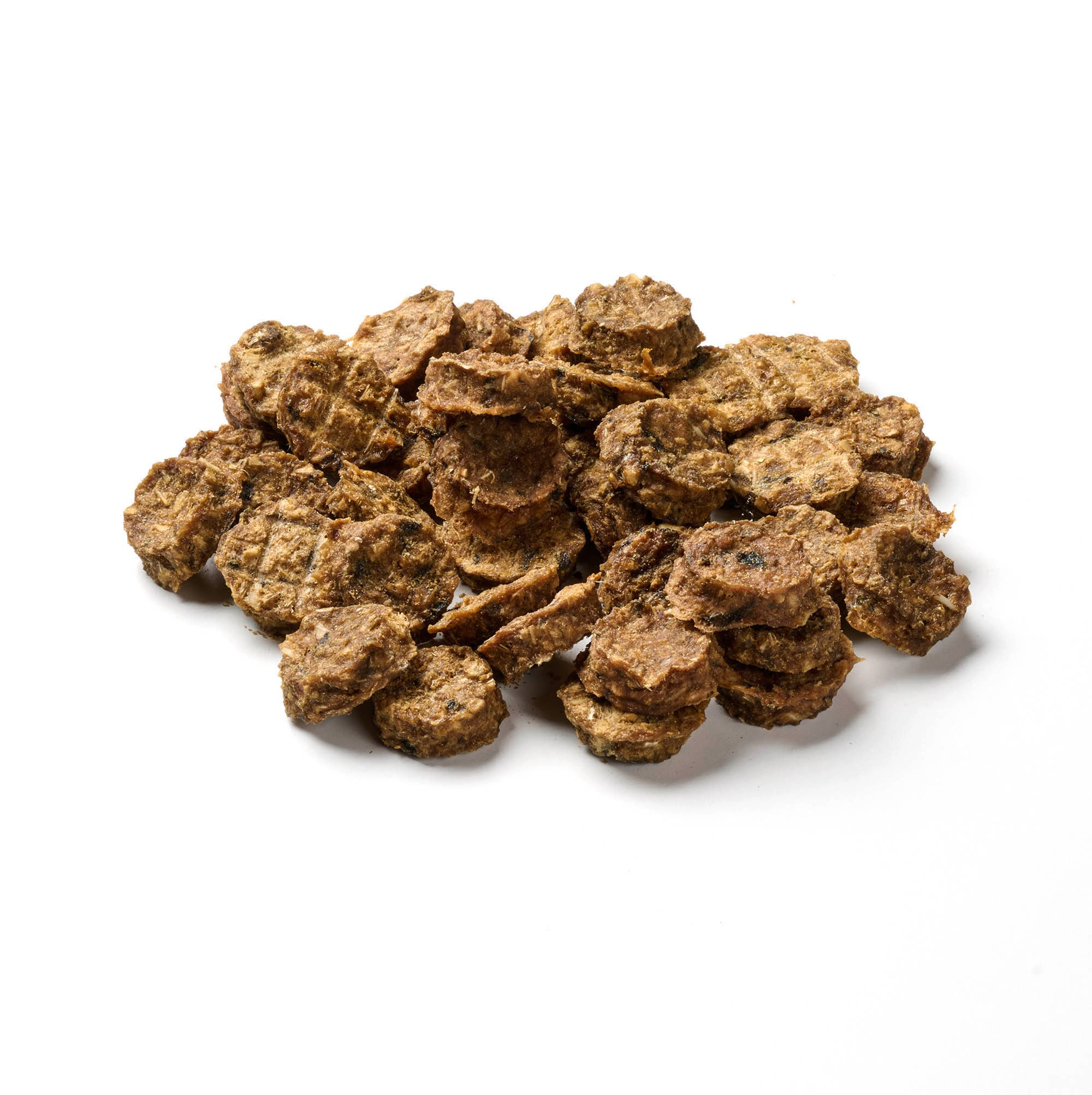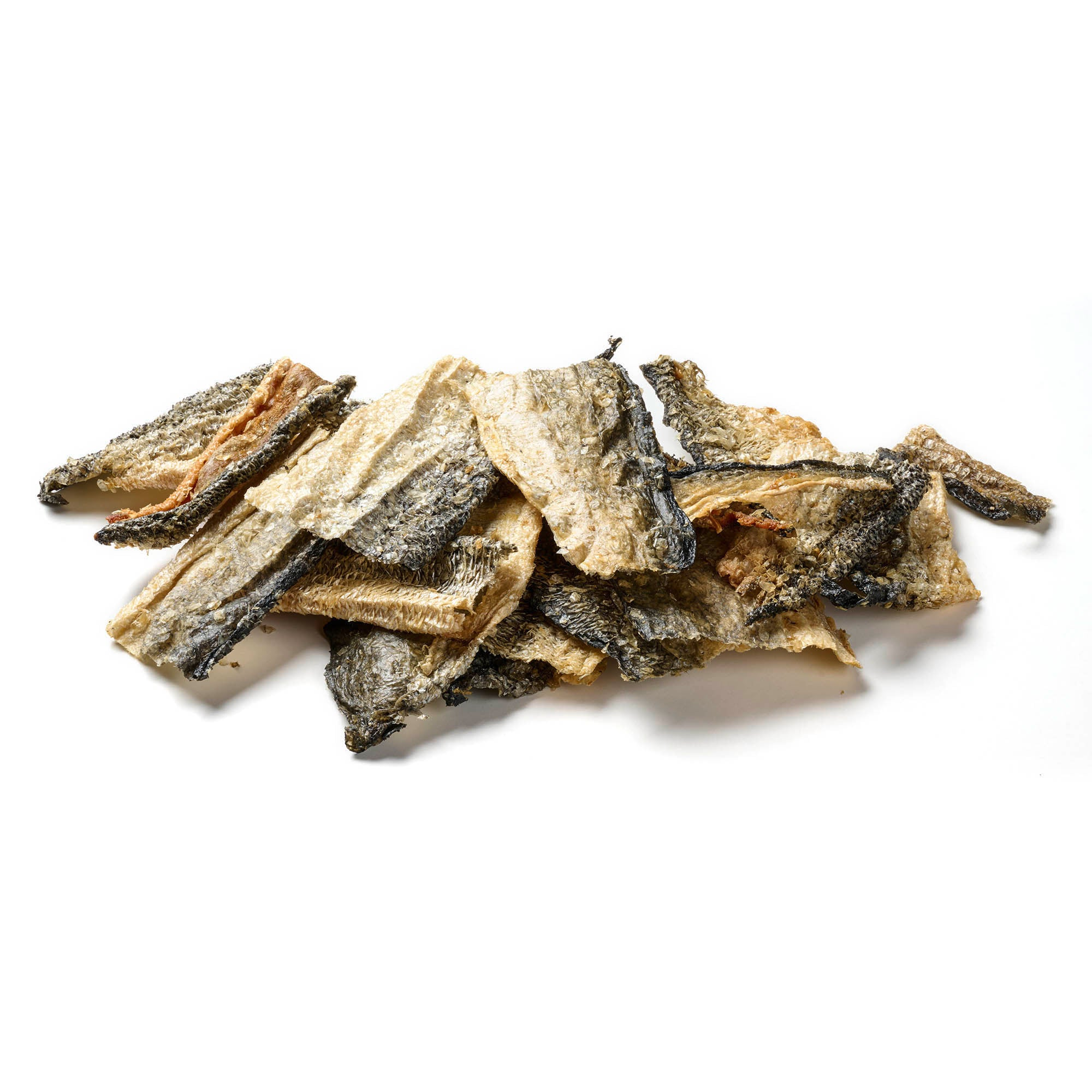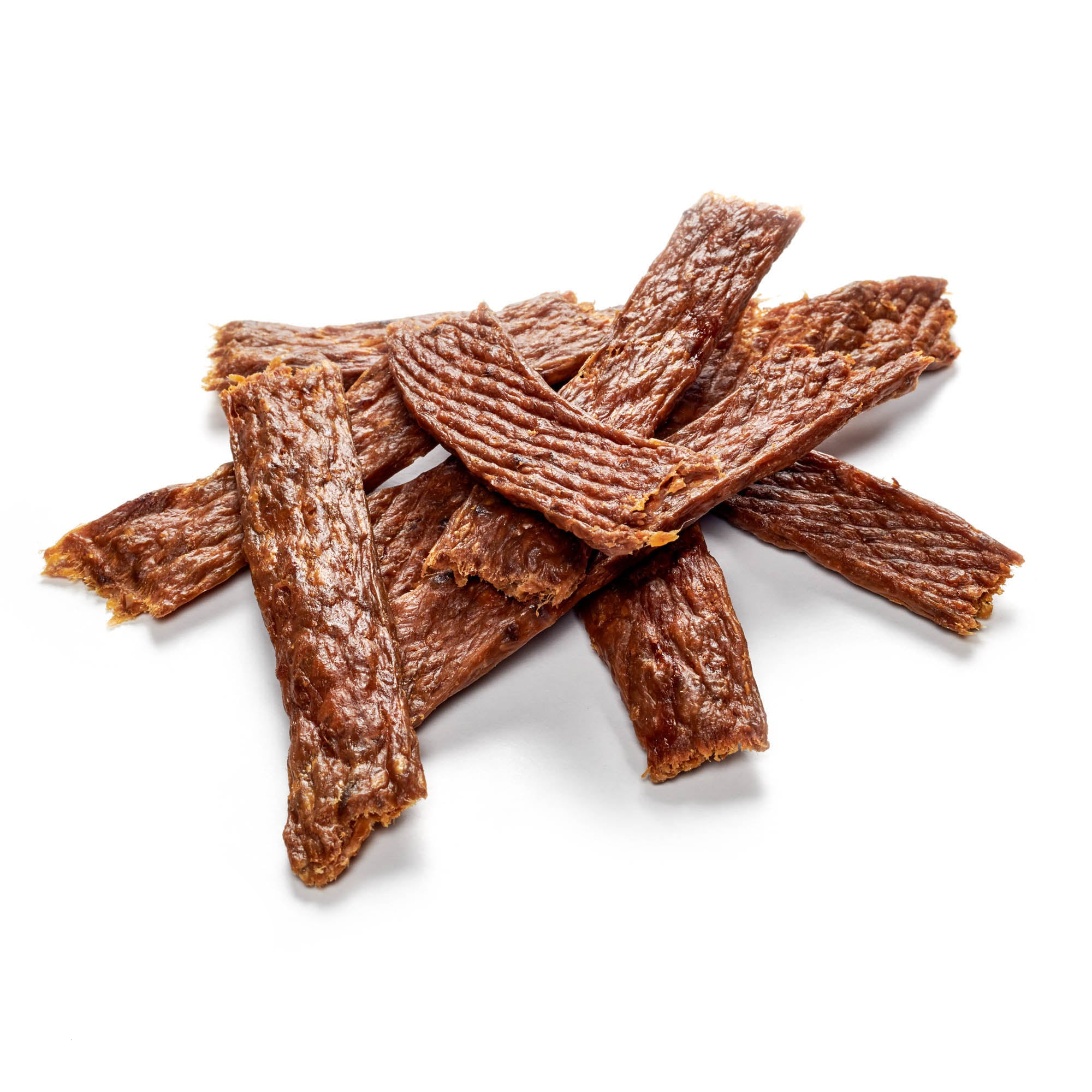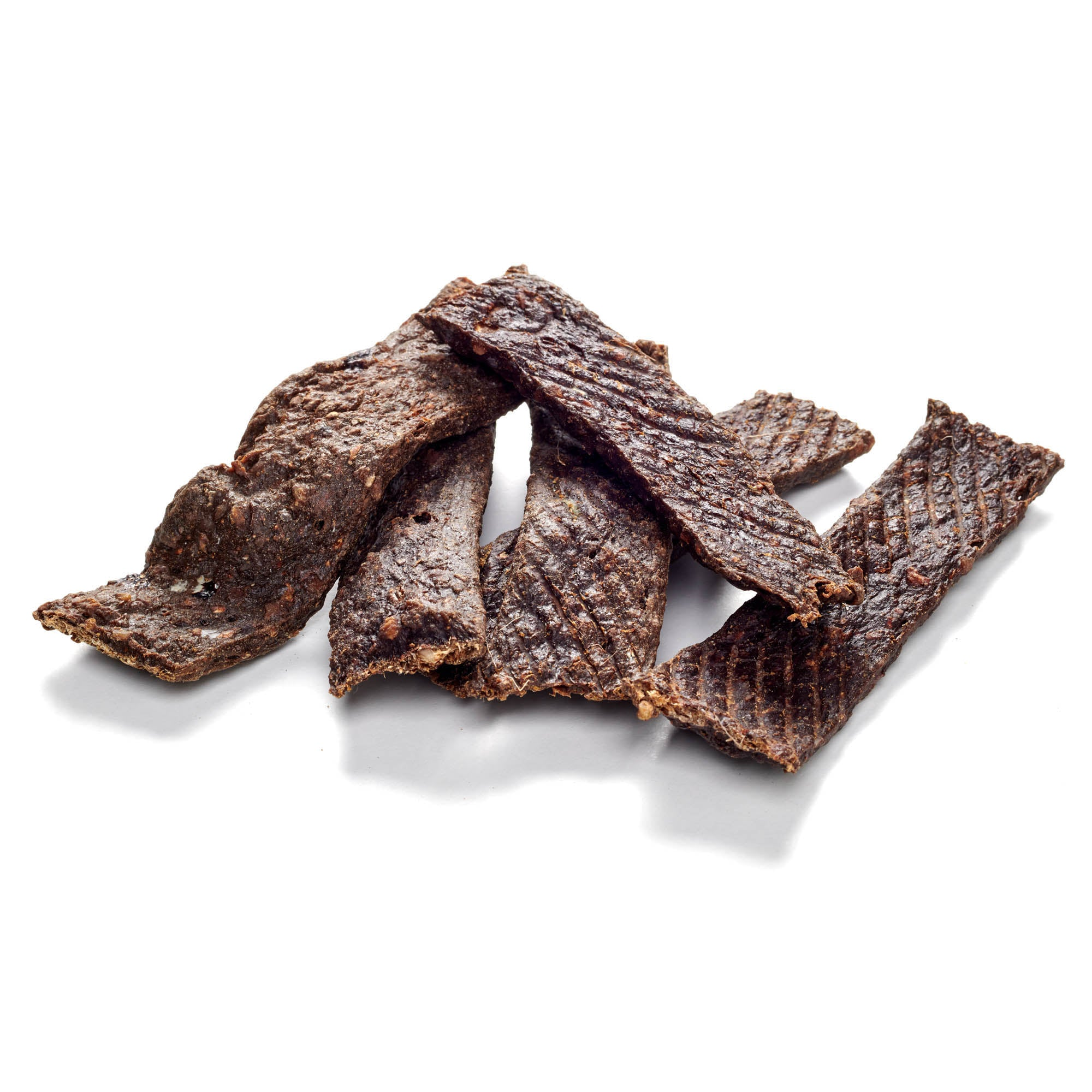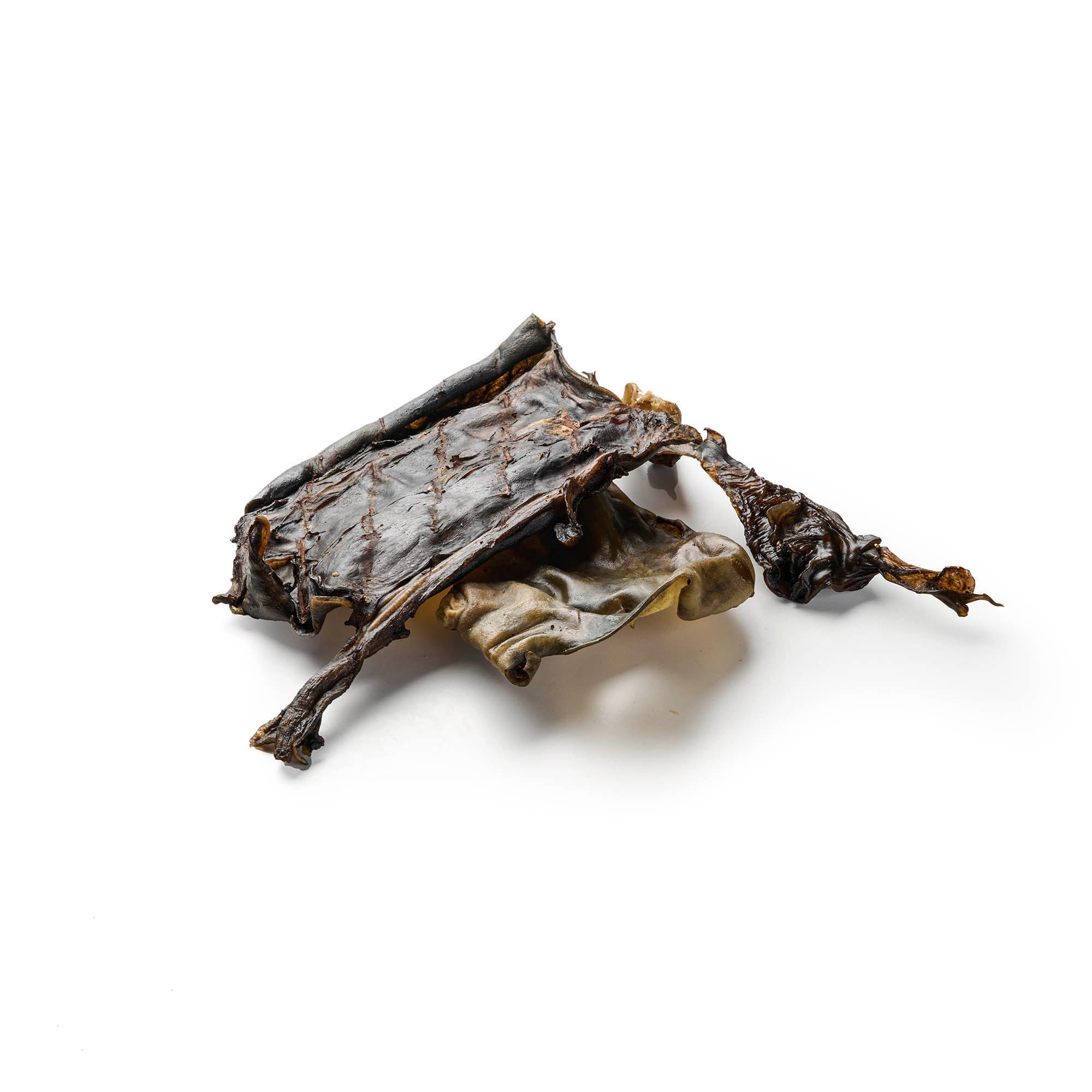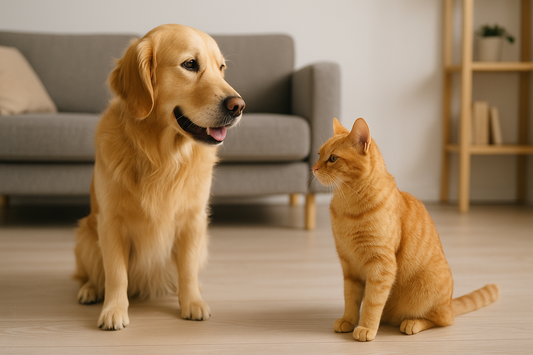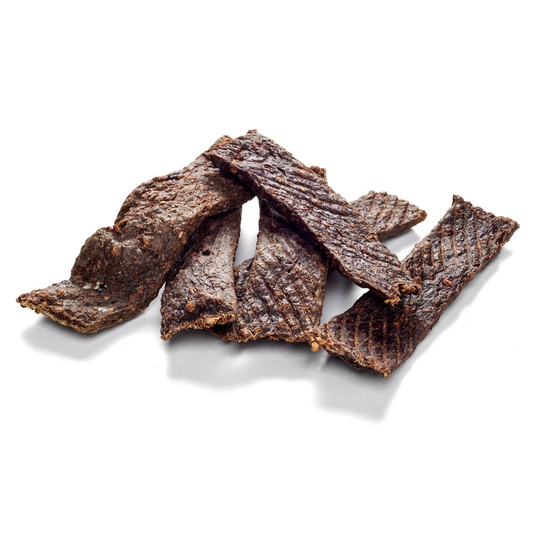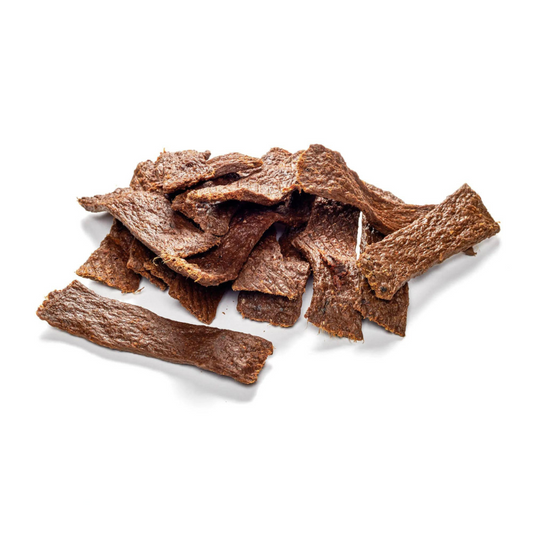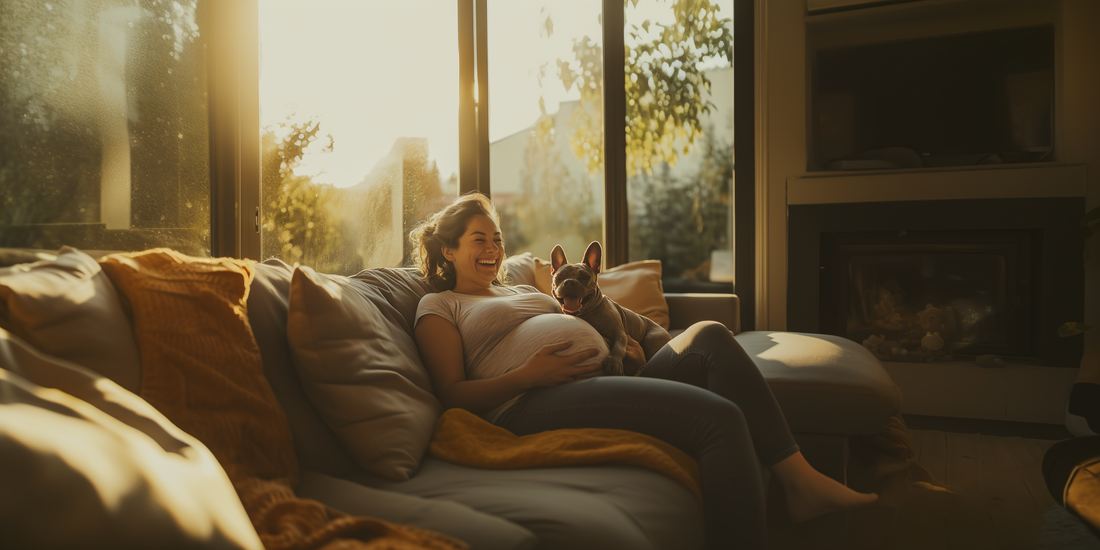
Dog and baby: How to live together successfully
Share
The arrival of a baby is life-changing—not only for the parents, but also for their four-legged companion. While expectant parents look forward to this new phase of their lives with anticipation, excitement, and perhaps a bit of nervousness, the dog initially struggles to fully comprehend the change. After all, they've often been the "baby" of the household, and suddenly someone else is the center of attention.
But don't worry! With proper preparation, the transition into a new family life can be smooth. Clear routines, targeted training, and, above all, patience will help. It's especially helpful to prepare dogs for the new situation before birth – this keeps stress and uncertainty to a minimum. And, of course, tasty chews are a must for relaxing moments!
Contents: Dog and baby: How to live together successfully
- Before birth: Preparing for the big change
- The first days after birth: The first encounter
- Everyday life with a dog and baby: Practical tips for a stress-free time
- Common problems and how to solve them
- Conclusion: A strong team from the start
Before birth: Preparing for the big change
Before the baby arrives, it's important to slowly get your dog used to the upcoming changes. This not only means changing daily routines, but also introducing new sounds, smells, and rituals into the house. Dogs are often sensitive to such changes—especially when they occur suddenly and unfamiliarly.
By getting used to new routines early on and providing targeted activities, your dog will remain relaxed. Structured walks, set feeding times, and targeted training sessions are particularly helpful. Relaxed chewing sessions with chew toys also help reduce stress and give your dog a sense of security.
Dog chews available for happy and satisfied four-legged friends!
Adapt the dog’s needs early on
Dogs love routines – they provide security and structure. If the family's daily routine changes with the arrival of a baby, the dog shouldn't be suddenly confronted with a fait accompli. It's better to make small adjustments weeks or months in advance.
This includes adjusting walks to possible new times. If your dog is used to afternoon walks, but this is no longer possible with a baby, the transition can be made gradually. Attention also plays a big role: If your dog is currently the center of attention, it can help to gradually get him used to waiting quietly while his owner is busy.
A particularly important aspect is a place to retreat. Especially with a baby, the house or apartment often becomes noisy. A cozy dog bed in a quiet spot provides your four-legged friend with a safe haven. A tasty chew, such as dried beef scalp or a piece of deer antler , makes it especially enjoyable – this allows the dog to relax while the family establishes new routines.
Preparing the dog for the baby
For dogs, a baby is initially a small, unknown creature that makes strange noises and smells different from anything they've ever encountered. To ensure the first encounter is stress-free, it's a good idea to get your dog used to the new situation early on.
One simple method is to play baby sounds beforehand. There are special apps or videos with baby cries, squeaks, and gurgles. This way, the dog can slowly get used to them and learn that these sounds are part of everyday life. You can also prepare for a baby's smell—for example, by using baby powder or lotion before birth.
Another good exercise: practicing handling baby accessories like strollers and changing tables. Introducing the stroller into your dog's daily routine before the birth ensures that the dog doesn't perceive it as a foreign object. And if a tasty chew disappears into their mouth while they're doing it, the association is immediately positive!
2.3 Use chews as entertainment
Especially during stressful times, it's important to offer your dog meaningful activities. Chews are an ideal solution, as they not only promote dental health but also have a calming effect.
If there's suddenly less time for extensive play after giving birth, a high-quality chew snack can be a great alternative. Natural chews like dried beef scalp , lamb ears, or pieces of antler are particularly suitable. They keep your dog occupied for a longer period of time without forcing him to burn off his energy through insufficient exercise.
Depending on the dog's chewing habits and preferences, there are various chew items that are particularly suitable:
For persistent chewers: Deer antler , olive wood or coffee tree wood – these extremely long-lasting chew snacks are a sustainable solution for dogs who like to chew for a long time.
For medium chewers: beef scalp, horse skin or buffalo skin sticks – they offer intensive chewing fun and are particularly tasty.
For sensitive stomachs or puppies: lamb ears , rabbit ears or flounder – they are easy to digest and still a great activity.
Even in stressful situations, such as a crying baby or feeding at night, a chew toy can help your dog relax. Chewing triggers the release of calming hormones, which helps reduce potential anxiety. This allows your dog to relax while the owner cares for the baby.
Additionally, filled chew snacks can provide an exciting activity.
A beef gullet or veal hoof filled with dog sausage or pâté will keep your dog busy for a long time and provide extra chewing fun.
With the right selection of chews, your dog will stay happy and balanced – even when family life is changing!
The first days after birth: The first encounter
When the baby finally arrives, the dog will likely be curious. He may have noticed the changed mood in the house for weeks and knows something is happening. Now it's important to make the first contact right.
A calm and controlled process ensures that dog and baby can get used to each other. The dog shouldn't be allowed to sniff the baby's face directly, but should be introduced to the new situation slowly. It's especially helpful to combine the first encounter with a positive experience—for example, petting or a tasty chew.
First contact: How to introduce dog and baby safely
The first meeting between dog and baby should be as relaxed and stress-free as possible. It's best if the dog has already been accustomed to the changed routine before the baby is born.
During initial contact, the dog should be on a leash and the baby should be held in the arms of a parent. The dog should be allowed to observe the baby from a distance at its own pace. Curiosity is permitted, but any sudden approaches should be gently discouraged.
It's especially important not to overwhelm your dog. If you notice signs of insecurity or excitement, it helps to briefly interrupt the moment. A small snack or chew can help relax and reinforce the positive first impression.
Avoid jealousy: How to prevent your dog from feeling neglected
Dogs are loyal companions and love their humans' attention. When a baby suddenly demands all of their attention, it can be unusual for the dog. Some dogs react with uncertainty, others seek affection particularly intensely—and some even show jealousy.
To ensure your dog continues to feel loved and appreciated, it's important to give it conscious attention after the baby's birth. Small rituals can help: an extra cuddle in the morning, a relaxing play session while the baby is sleeping, or a long walk with intensive nose work.
Chew toys are also particularly helpful. While the parents care for the baby, the dog can be entertained with a tasty chew. This teaches the dog that quiet moments are associated with positive experiences. At the same time, it gives the dog something meaningful to do and helps them adjust to the new family situation.
Everyday life with a dog and baby: Practical tips for a stress-free time
After the first exciting days, a new routine gradually sets in. But with a baby in the house, the daily routine is often unpredictable – sudden hunger pangs, spontaneous diaper breaks, and short nights are all part of the experience. To prevent your dog from feeling neglected, clear structures and creative ways to keep them occupied are essential.
Good organization helps integrate your dog into the new routine as best as possible. This doesn't mean that every minute has to be planned, but established routines provide stability. At the same time, flexibility and patience are required – because sometimes the baby sleeps longer, other times it's particularly restless.
Organizing the daily routine: Routines for all family members
Dogs love structure – and babies also benefit from clear routines. But how do you manage to reconcile both needs? The answer: flexible but thoughtful time management.
In the morning, a quick cuddle with your dog can start the day. This is followed by a relaxing walk – ideally while the baby is asleep in the stroller. This way, the dog gets some exercise while the baby enjoys fresh air. Once home, the dog can entertain itself with a chew toy while the parents take care of the baby.
Your dog should receive regular attention throughout the day—whether through walks, a short training session, or simply a few cuddles. It's especially important that feeding and resting times remain as consistent as possible.
A little tip: A well-trained dog can even take on small tasks! Some dogs love to bring diapers or baby toys on command. This way, your four-legged friend doesn't feel left out, but rather an important part of the family.
Safety rules for harmonious coexistence
As much as a dog and baby will eventually love each other, safety always comes first. A curious dog, with its boisterous nature, can accidentally knock over or frighten a baby. Therefore, some clear rules are needed for safe cohabitation.
- First, never leave a dog and baby unattended. No matter how friendly the dog is, direct contact should always take place under supervision.
- Second, pay attention to your dog's body language. Yawning, turning away, or suddenly licking the nose can be signs of stress. If your dog wants to retreat, that should be respected.
- Third: Set a clear boundary between the baby area and your dog. A dog bed or blanket as a designated resting area helps provide a safe place for your dog to retreat to. Getting your dog used to relaxing there in certain situations will prevent unwanted conflicts.
Especially practical: If your dog retreats to its spot on its own, you can reward it with a chew toy. This way, it quickly learns that this area is a pleasant place!
Dog activities despite baby routine
With a newborn, your hands are often full – but your dog also needs attention. To ensure your dog doesn't miss out, it's worth using creative ways to keep him busy.
Chew toys are a real insider tip! Not only do they provide meaningful activity, they also have a calming effect. While the baby is being fed or changed, the dog can enjoy a tasty chew.
In addition to chews, intelligence toys and sniffing games are also suitable. A small search task with treats mentally challenges the dog without requiring much exercise. Even short training sessions – such as "stay" or "wait" – keep the dog mentally active and are easy to integrate into everyday life.
Especially important: Quality comes first! Natural chews such as beef scalp, rabbit ears, or beef tripe are healthy alternatives to artificial chew sticks and keep your dog thoroughly occupied.
Pamper your dog with our chew products!
Common problems and how to solve them
Despite the best preparation, challenges can arise after the birth of a baby. Dogs react to changes differently: some are curious and open-minded, others are unsettled or even jealous. A sudden shift in attention, new noises, or a change in daily routine can cause the dog to exhibit unusual behavior.
One thing is especially important here: stay calm. Insecurities or problem behavior can usually be resolved with targeted training, patience, and positive reinforcement. The dog should not be punished, but rather gradually accustomed to the new situation. Chew snacks are particularly helpful – they provide entertainment, help reduce stress, and reward desired behavior.
Dog shows jealousy or insecurity
Dogs are close companions to their owners and love attention. A sudden shift in attention can lead to insecurity or jealousy. Some dogs seek increased closeness, jump between parent and baby, or try to gain attention through unwanted behavior. Others withdraw, appear stressed, or display anxious behavior.
Understand causes and react correctly
A dog that has previously received a lot of attention will quickly notice when the focus changes. This can lead to the dog feeling neglected. Particularly sensitive dogs may react by withdrawing or becoming overly clingy. It's important not to fall back into old patterns and suddenly give the dog more attention out of pity – this could unintentionally reinforce the behavior.
Training methods for safe interaction
To ensure the dog continues to feel like a part of the family, clear structures are helpful. Rituals such as shared walks, short training sessions, or cuddle time in the evening provide security. The key is that the dog continues to receive affection, but within a controlled environment.
If the dog is overly demanding, ignore it and reward calm behavior instead. For example, teach him to lie down in his place while the baby is being fed. Once he remains calm, reward him—either in the form of petting, words of praise, or a chew toy.
Reward with chew snacks: Use positive reinforcement
Jealousy and insecurity can be effectively reduced with positive reinforcement. Whenever the dog remains relaxed or exhibits desired behavior, it can be rewarded with a tasty chew. Long-lasting chews such as dried beef scalp or chew bones are particularly suitable. As the dog chews contentedly, it associates the new situation with a positive experience—an effective way to reduce stress and guide behavior.
The dog barks or becomes restless when the baby cries
Dogs have keen hearing, and a baby crying or screaming can unsettle them. Some dogs react by barking, squeaking, or pacing nervously, while others actively try to alert their owner.
Why dogs react to baby crying
In nature, certain sounds trigger instincts – including a baby's crying. Some dogs interpret the cry as a distress call and want to help, while others are simply unsettled by the unusual volume. Particularly sensitive dogs tend to become nervous or even show signs of stress.
Desensitization and gradual habituation
To help your dog stay relaxed, a gradual introduction helps. Baby sounds can be played even before birth, softly at first, then gradually louder. If the dog responds calmly, praise it or reward it with a treat. This way, it learns that the sounds are harmless.
After birth, crying shouldn't be associated with excitement or hecticness. If you remain calm yourself, you'll transfer this energy to your dog. If necessary, you can create a relaxed atmosphere—for example, through quiet music or calming rituals.
Relaxation through chew snacks or calming rituals
A proven method for calming dogs is chewing. Chewing has a relaxing effect and helps the dog reduce stress. A high-quality chew can be offered to the dog as soon as the baby cries – this way, the dog will associate the sound with a positive experience. Natural chews such as buffalo hide bones , lamb ears , or pieces of antler are particularly suitable.
Additionally, you can establish a designated place where the dog can retreat when restless. A cozy dog blanket or basket in a quiet corner provides security. With a regular routine, the dog will quickly learn that it can relax even when the baby is crying.
Dog steals baby things – what to do?
Many dogs love to steal things—especially if they smell exciting. Baby toys, diapers, or onesie clothes are particularly tempting. This can be not only annoying but also dangerous if the dog swallows them.
Why dogs like to steal baby toys
Dogs explore their environment with their noses and mouths. New objects that smell of baby are particularly interesting. Furthermore, stealing baby things can be a way to get attention—even if it's just a response like "No!" or "Stop that!"
Offer alternative chew snacks for distraction
To prevent your dog from even thinking about stealing baby toys, it's worth providing your dog with his own chew toys. Chew snacks offer an exciting alternative and satisfy his need to chew in a meaningful way. Robust chew toys like chew sticks or coffee tree wood are particularly suitable.
Another option: intelligence toys or food balls. These keep the dog busy and reduce his interest in baby items. Regularly offering your dog new chew snacks or toys prevents boredom and redirects his attention.
Setting clear boundaries: Training tips for a harmonious home
Rules help prevent unwanted behavior. To prevent your dog from touching baby toys, you can train the command "leave it" or "no." As soon as he lets go of a forbidden object, he is rewarded—either with a treat or a chew toy.
A targeted swapping game can also help: If the dog grabs a baby toy, calmly take it away and replace it with one of your own chews. This way, the dog understands that there are better alternatives for him.
Especially important: Be patient! With clear rules, positive reinforcement, and the right activities, your dog will quickly learn which things are off-limits—and will leave the baby toys alone in the future.
Conclusion: A strong team from the start
A dog and a baby under one roof – this is not only a challenge, but also a wonderful experience. With proper preparation, clear structures, and plenty of patience, the family will grow together into a harmonious team.
It's especially important not to neglect your dog and to give it enough attention. Small rituals, targeted activities, and relaxing chews will help your four-legged friend feel just as comfortable as your baby.
Ultimately, a special friendship develops: Many children grow up with their dog as a loyal companion, sharing adventures and experiencing a bond that lasts a lifetime. And when they first start playing together, it becomes clear – dog and baby are an unbeatable team!
Spoil your four-legged friend with our delicate chew items!

